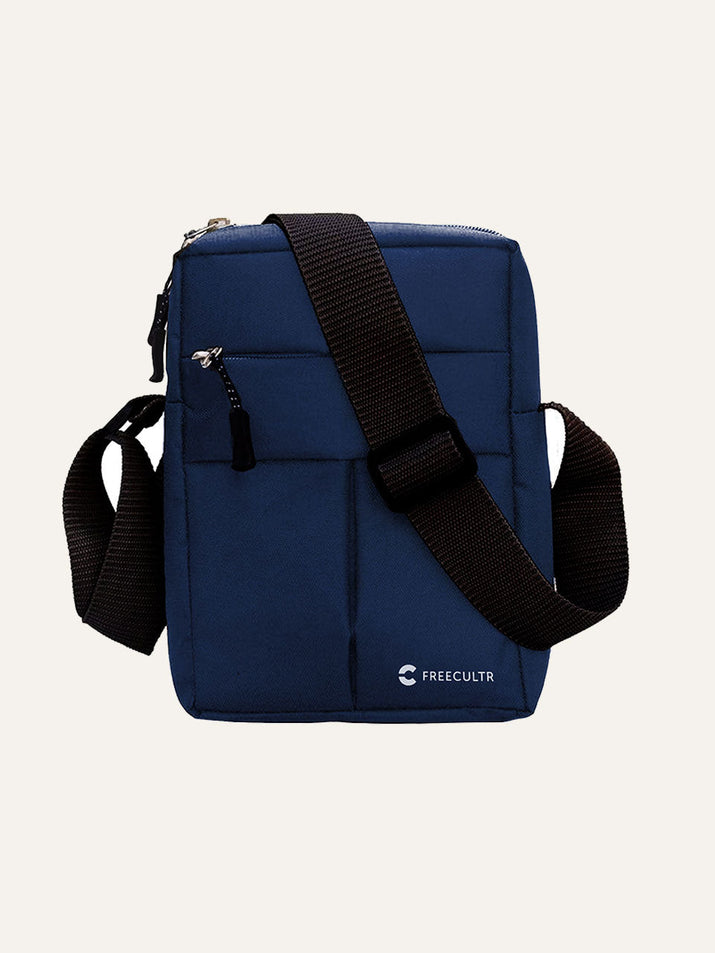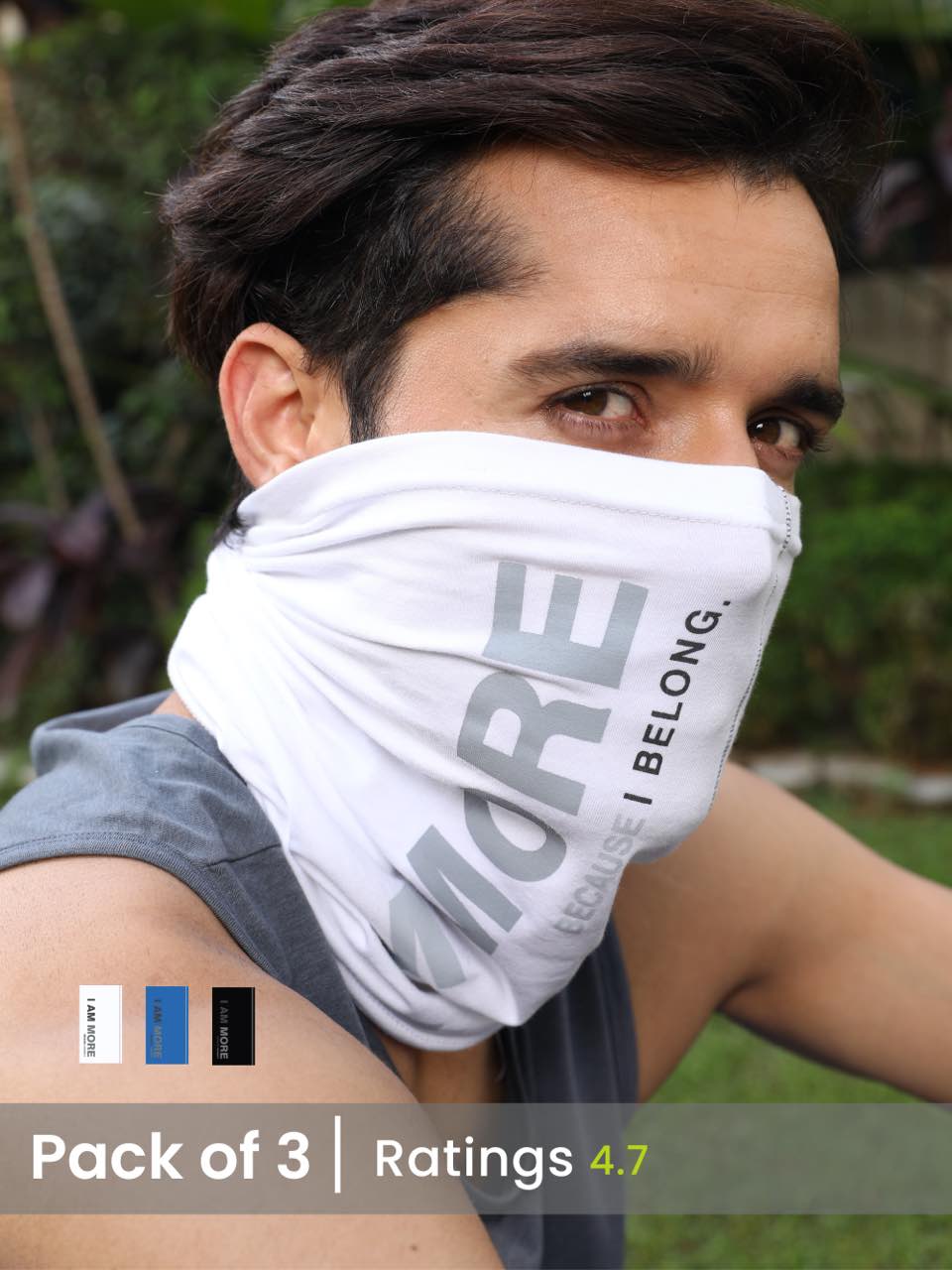
Understanding the Sling Bag Phenomenon
In the landscape of modern accessories, the sling bag has emerged as a quintessential item for urban dwellers and travelers alike. Far more than just a fashion statement, it represents a thoughtful fusion of practicality, organization. Effortless mobility. At its core, a sling bag is a single-strap bag designed to be worn across the body – typically over one shoulder and resting on the opposite hip or back. This distinctive wear style sets it apart from traditional backpacks or messenger bags, offering a unique blend of accessibility and security.
The evolution of the sling bag can be traced back to various forms of single-strap pouches and utility bags. Its modern iteration gained significant traction with the rise of minimalist lifestyles and the increasing demand for quick-access solutions in bustling environments. Unlike a backpack that often requires removal to access contents, a sling bag can be effortlessly swung from back to front, placing essentials within immediate reach. This "swing-around" functionality is a major draw, making it ideal for navigating crowded commutes, exploring new cities, or simply keeping frequently used items close at hand without the bulk of a larger bag. Its appeal lies in its ability to carry daily essentials without feeling cumbersome, embodying a philosophy of carrying only what's necessary, organized and accessible.
The Anatomy of an Organized Sling Bag
What makes a sling bag so effective for organization and urban mobility isn't just its form factor. The intelligent design principles applied to its internal and external features. A well-designed sling bag is a masterclass in compact efficiency.
- Main Compartment This is the primary storage area, often sized to comfortably fit a tablet (e. G. , an iPad Mini) or a small water bottle. Many include padded sleeves for delicate electronics.
- Quick-Access Pockets Strategically placed zippered or magnetic pockets on the front, back, or strap allow for immediate retrieval of items like keys, wallets, or smartphones without needing to open the main compartment.
- Internal Organizers Beyond the main space, most quality sling bags feature a variety of internal pockets, mesh dividers, pen loops. Key clips. These dedicated slots prevent items from jumbling together, ensuring everything has its place. For instance, a small elastic loop might secure a portable charger, while a zippered mesh pocket keeps earbuds tangle-free.
- Water Bottle Pockets Some larger sling bags incorporate external or internal pockets specifically designed to hold a water bottle, a crucial feature for extended urban explorations.
- Anti-Theft Features As a bag worn in potentially crowded areas, many sling bags integrate security enhancements such as lockable zippers, RFID-blocking pockets (to protect against digital theft of credit card details). Slash-resistant materials like Spectra or UHMWPE woven into the fabric.
Materials play a significant role in the durability and aesthetic of a sling bag:
- Nylon (e. G. , Ballistic Nylon, Ripstop Nylon) Known for its exceptional strength-to-weight ratio, abrasion resistance. Often water repellency. Ballistic nylon, originally developed for flak jackets, is incredibly tough.
- Polyester A common and affordable material, often treated for water resistance. It's durable but generally less robust than nylon.
- Cordura Fabric A brand of durable synthetic fabric known for its resistance to tears, scuffs. Abrasions. Often found in high-performance gear.
- Leather Offers a premium look and feel, excellent durability. Develops a unique patina over time. Requires more specific care.
Ergonomics are also paramount. Adjustable, padded straps ensure comfort during prolonged wear. Many designs offer ambidextrous wear options, allowing users to switch shoulders for balanced weight distribution or preferred access.
Sling Bag vs. Traditional Bags: A Comparative Analysis
To truly appreciate the utility of a sling bag, it's helpful to compare it against other common bag types. While each serves a purpose, the sling bag carves out its own niche in terms of capacity, accessibility. Form factor.
| Feature | Sling Bag | Backpack | Messenger Bag | Fanny Pack (Waist Pack) |
|---|---|---|---|---|
| Capacity | Small to medium (2L - 10L), ideal for essentials + a few extras. | Medium to large (15L - 40L+), suitable for laptops, books, clothing. | Medium (8L - 20L), often fits laptops, documents. | Very small (0. 5L - 2L), strictly for bare essentials. |
| Wear Style | Single strap, worn across body (chest or back), easily swung to front. | Two shoulder straps, worn on back. | Single strap, worn across body (shoulder to hip), often larger. | Worn around the waist or across the chest. |
| Accessibility | Excellent; quick swing-around access without removal. | Poor; usually requires removal to access contents. | Good; can be swung to front for access. Often bulkier than sling bag. | Excellent; directly on body, immediate access. |
| Weight Distribution | Concentrated on one shoulder. Often balanced across torso. | Evenly distributed across both shoulders and back. | Can be uneven, pulling on one shoulder. | Centered on waist/chest. |
| Formality | Casual to smart-casual; increasingly accepted in urban professional settings. | Varies from casual to professional (e. G. , laptop backpacks). | Often perceived as more professional/academic than a sling bag. | Generally casual, recreational. |
| Security | Good; worn close to body, easy to keep in sight. | Vulnerable to pickpocketing from behind. | Good; worn close to body. | Excellent; directly on body, very difficult to pickpocket. |
The sling bag strikes a sweet spot between the minimal carry of a fanny pack and the larger capacity of a backpack or messenger bag. It's designed for the agile individual who needs more than just pockets but less than a full day's worth of gear, prioritizing immediate access and a streamlined profile.
Optimizing Your Sling Bag for Urban Mobility
The true power of a sling bag unfolds when you thoughtfully curate its contents and grasp how to leverage its design for seamless urban mobility. It's not just about what you carry. How you carry it.
Everyday Carry (EDC) Essentials
For most urban scenarios, your sling bag becomes your personal command center for essential items. A typical EDC loadout might include:
- Smartphone Often in a dedicated quick-access pocket.
- Wallet/Card Holder Secured in an internal or RFID-protected pocket.
- Keys Attached to an internal key leash to prevent loss.
- Portable Power Bank & Cable Essential for keeping devices charged on the go.
- Earbuds/Headphones For music, podcasts, or calls during transit.
- Small Notebook & Pen For jotting down ideas or quick notes.
- Hand Sanitizer & Lip Balm Small personal care items.
- Compact Multi-tool (optional) For minor fixes.
Strategic Packing
Effective packing within a sling bag means placing items based on their frequency of use and security needs. High-frequency items (phone, wallet, keys) go into quick-access or outer pockets. Less frequently accessed but essential items (power bank, small first-aid kit) reside in the main compartment, ideally in internal pockets. Heavier items should be placed closer to your body to maintain balance and comfort.
Security Features in Action
Consider a scenario: you're navigating a crowded subway station during rush hour. Your sling bag, worn across your chest, allows you to keep an eye on your belongings. If it features lockable zippers, you can secure the main compartment. An RFID-blocking pocket ensures your credit card details are safe from skimming. Some premium sling bags even incorporate anti-slash materials, providing peace of mind against opportunistic theft. This direct line of sight and proximity to your body is a significant security advantage over a backpack.
Real-World Applications & Anecdote
The versatility of the sling bag shines in various real-world scenarios:
- Daily Commute For me, during my daily train commute across the city, my 5-liter sling bag is indispensable. I used to carry a bulky backpack just for my phone, wallet, keys. A book. Switching to a sling bag meant I could effortlessly access my transit card without fumbling, pull out my earbuds for a podcast. Even grab a snack, all while standing in a packed train. When I needed to sit, the compact nature of the bag meant it didn't take up extra space, nor did I have to remove it to avoid bothering other passengers. This ease of access and minimal footprint significantly improved my commuting experience.
- Travel & Sightseeing When exploring a new city, a sling bag keeps your passport, local currency. Maps secure and accessible, allowing you to focus on the experience rather than worrying about your belongings.
- Quick Errands Perfect for a dash to the grocery store or a coffee run when you don't need a large bag but want more than just your pockets.
- Event Attendance At concerts or festivals, a sling bag provides secure storage for essentials while keeping your hands free.
The actionable takeaway here is to assess your daily needs. If you find yourself constantly reaching for items in a larger bag, or if you prefer to travel light and nimble, a strategically packed sling bag can significantly streamline your urban movements and enhance your sense of security and preparedness.
Choosing the Right Sling Bag: Factors to Consider
With an increasing array of options on the market, selecting the ideal sling bag requires careful consideration of several factors tailored to your specific needs and lifestyle.
- Purpose What will be its primary use?
- Daily Commute Look for internal organization, quick-access pockets. Potentially a tablet sleeve.
- Travel Prioritize anti-theft features (RFID blocking, lockable zippers), durable, water-resistant materials. Perhaps an external water bottle pocket.
- Photography Some sling bags are designed with padded inserts for camera bodies and lenses, offering quick access.
- Specific Gear If you carry specific tools or gadgets, ensure the bag has appropriate compartments or attachment points.
- Capacity (Liters) Sling bags typically range from 2 liters to 10 liters.
- 2-4L Ideal for minimalist carry – phone, wallet, keys, small power bank.
- 5-7L Most versatile for daily use, accommodating a small tablet, e-reader, or a compact umbrella in addition to essentials.
- 8-10L+ Can carry a larger tablet, small jacket, or a substantial amount of gear, bordering on small backpack territory.
- Material and Durability
- Consider the environment you'll be in. For rugged use or unpredictable weather, highly durable and water-resistant materials like Cordura or treated nylon are preferable.
- For a more refined look, leather or high-quality canvas might be suitable.
- Check stitching quality and zipper brands (e. G. , YKK zippers are a standard for reliability).
- Comfort and Fit
- Strap Design Look for a padded, adjustable strap. Some sling bags feature a stabilizing strap (a smaller strap that connects to the main strap and clips to the bottom of the bag) to prevent excessive swinging during active movement.
- Back Panel A breathable, padded back panel improves comfort, especially during warmer weather or prolonged wear.
- Ambidextrous Design If you prefer to switch shoulders or are left-handed, ensure the bag can be worn comfortably on either side.
- Style and Aesthetics
- Sling bags come in a vast range of styles, from sleek minimalist designs to rugged tactical looks. Choose one that aligns with your personal aesthetic and wardrobe.
- Consider color and hardware finishes.
- Brand Reputation and Reviews
- Reputable brands often invest more in design, materials. Quality control. Sites like Carryology or The Wirecutter offer in-depth reviews and comparisons of carry gear.
- Read user reviews to gauge real-world performance, durability. Common issues. Look for consistent feedback on comfort, accessibility. Overall satisfaction.
By thoughtfully assessing these factors, you can select a sling bag that not only meets your organizational needs but also seamlessly integrates into your urban mobility routine.
Maintenance and Care for Your Sling Bag
To ensure your sling bag remains a reliable companion for years to come, proper maintenance and care are essential. The specific care routine will largely depend on the materials it's made from.
- Nylon and Polyester Sling Bags
- Cleaning For general dirt, use a soft brush or damp cloth to wipe down the exterior. For tougher stains, a mild soap (like dish soap) diluted in water can be applied gently with a cloth or soft brush. Avoid harsh detergents or bleach, as these can damage the fabric and its water-resistant coating.
- Drying Air dry completely, away from direct sunlight or heat, which can degrade synthetic fibers. Ensure it's fully dry before storing to prevent mildew.
- Deep Cleaning For a more thorough clean, some nylon or polyester bags can be hand-washed in a tub with cool water and mild soap. Always check the manufacturer's care label first.
- Leather Sling Bags
- Cleaning Wipe with a soft, damp cloth to remove surface dirt. For deeper cleaning, use a specialized leather cleaner according to the product instructions.
- Conditioning Leather can dry out and crack over time. Apply a good quality leather conditioner every few months to keep it supple and prevent cracking.
- Water Protection Use a leather protector spray to enhance water resistance. Remember leather is rarely fully waterproof.
- Drying If it gets wet, blot immediately with a dry cloth and air dry naturally. Do not use heat.
- General Care Tips for Any Sling Bag
- Empty Regularly Remove all contents periodically to shake out crumbs, dust. Debris from pockets and crevices.
- Zipper Maintenance Keep zippers clean and free of grit. A little zipper lubricant (like beeswax or a silicone spray) can help them run smoothly if they start to stick.
- Strap & Hardware Check Periodically inspect the strap, buckles. Other hardware for signs of wear and tear. Address any fraying or damage early to prevent complete failure.
- Storage When not in use, store your sling bag in a cool, dry place, ideally unzipped or slightly open to allow air circulation. Avoid storing it in direct sunlight or damp environments.
By investing a little time in caring for your sling bag, you're not just preserving its appearance. Also ensuring its functionality and extending its lifespan as a key tool for organized essentials and urban mobility.
Conclusion
Ultimately, the sling bag transcends mere accessory status; it's a strategic tool for urban navigation and streamlined living. My own experience, particularly during a recent crowded train commute in Tokyo, reinforced how quickly accessing my transit card from a dedicated sling pocket minimized stress and saved precious seconds. This isn't just about carrying essentials; it's about optimizing your flow, whether you're a digital nomad hopping between cafes or simply tackling daily errands. Consider how a well-organized sling, like one with specific compartments for your AirPods Pro and a compact power bank, empowers spontaneous adventures and keeps you connected without fumbling. The actionable takeaway? Curate your carry. Think about what you truly need for your next outing, not just what you might need. Embrace the freedom of minimalist mobility, where every item has its purpose and place, allowing you to move with unparalleled ease. Just as the right inner wear provides foundational comfort for any activity, your sling bag offers the practical foundation for an unencumbered urban life. For more on essential comfort, consider articles like Tank Top – Cool Comfort & Active Lifestyle Essential. Step out lighter, smarter. Ready for anything.More Articles
Inner Wear – Unrestricted Movement & Gentle SupportTank Top – Cool Comfort & Active Lifestyle Essential
Men's T-shirt – Everyday Comfort & Perfect Fit
Women's Tank Top – Breathable Fabric & Versatile Layering
FAQs
What's the main benefit of using a sling bag?
Sling bags are fantastic for keeping your daily essentials organized and easily accessible. Unlike a backpack, they offer quick reach to your phone, wallet, keys. More, making them super convenient for urban life and staying on the go.
How do sling bags help me stay organized?
Most sling bags come with multiple compartments, sometimes even specific pockets for your phone, cards, or passport. This design helps prevent everything from becoming a jumbled mess, so you can find what you need without digging around.
Are they comfortable for moving around a lot in the city?
Absolutely! Sling bags are designed for urban mobility. They sit snugly across your body, distributing weight evenly and keeping your hands free. Whether you're commuting, cycling, or just exploring, they stay secure and don't bounce around like a traditional shoulder bag.
What kind of stuff can I typically fit inside a sling bag?
You can usually fit all your daily must-haves: smartphone, wallet, keys, earbuds, a small power bank, perhaps a compact notebook, or even a small water bottle. They're perfect for essentials and a little extra. Not for carrying a laptop.
Can I wear it in different ways?
While most commonly worn cross-body over one shoulder, some sling bag designs allow for versatility. You might be able to wear them on your back like a mini backpack or even on your chest for added security, depending on the strap and design.
Are sling bags good for travel, especially in crowded places?
Yes, they're excellent for travel! Their close-to-body design makes them more secure against pickpockets than a standard backpack. You can keep your passport, tickets. Cash safe and within your sight, which is a big plus in busy tourist areas.
How do I choose the right sling bag for my needs?
Consider what you usually carry daily and how much space you'll need. Look for durable, often water-resistant materials, comfortable adjustable straps. Well-designed compartments. Also, think about the overall style that matches your urban aesthetic.






